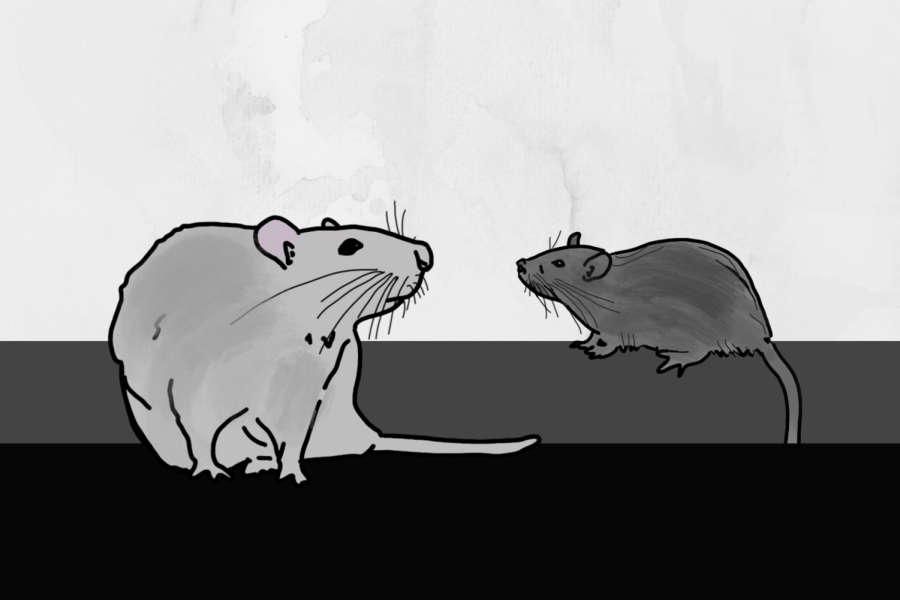Rats! Increased numbers of rodents infiltrate Evanston homes, businesses
Residents have reported rat sightings throughout Evanston this winter.
March 2, 2023
When Ald. Devon Reid (8th) walks his dog late at night, he said he sometimes sees a rat pop out from an alley.
Reid is not the only one to run into these rodents. Many residents have spotted them in residences, local businesses and the streets, he said.
“I’ve received almost more complaints about rats than almost any other issue as councilmember,” Reid said. “It’s certainly in the top five issues that folks are concerned about or that folks reach out about.”
Residents report rat sightings throughout Evanston several times a week, according to data from the city’s 311 feed. According to its website, the city’s Health & Human Services Department’s Rodent Program “tracks and investigates 311 service requests and complaints; inspects alleys and properties for rodents; and performs and contracts baiting and exterior treatment for residential properties.” Any resident who spots a rat can access these resources by calling or texting 847-448-4311 or submitting a 311 service request online.
Last year, the health department brought all aspects of the program in-house instead of contracting an outside pest control provider. Greg Olsen, who manages the Rodent Program, said the change improved speed and communication.
Rats may be more likely to inhabit downtown areas where restaurants provide ample sources of food, Olsen said, but tracking their habitation patterns still proves difficult.
“They move around with seemingly no rhyme or reason,” Olsen said.
The rat population in many suburbs increased due to the COVID-19 pandemic, according to Jason McKinley, manager at Chicago area pest control company Mice Hunters.
The rodents’ usual inner-city haunts — mainly food waste in trash receptacles and in the street — depleted as restaurant operations decreased and remote workers increased, McKinley said. As a result, many rats moved to the suburbs in search of sustenance.
Rats’ increasing boldness around people also drives them into areas with high human activity, McKinley added.
“Rats have gotten a lot more people-friendly,” he said. “They’re like pigeons in Chicago.”
Though the rodents may be more comfortable with people, that may not always be the case for people’s interactions with them.
McKinley said he’s encountered residents who live in fear of the rodents in the community.
“It’s, ‘I don’t want to go into my basement,’ or ‘I don’t go into my garage anymore,’ or ‘I don’t garden because they’re always out,’” he said.
To reduce the number of rats, Olsen said residents can ensure garbage bins remain secure, clean up after pets and keep up lawn maintenance.
Olsen emphasized that rectifying the issue requires community cooperation.
“You can have a city block where every neighbor keeps their property pristine, but if there’s one house that lets it go, they draw rats in,” Olsen said.
To enact long-term change in the rat population, however, Reid said the city may need to overhaul its trash collection process. Having residents bring trash to centralized collection stations instead of having city workers collect trash from each residence could help, Reid said, because then all trash would be stored in a secure underground compactor.
“Short of making substantial changes in the way that we deal with trash, we’re not going to really see the rat issue be abated anytime soon,” Reid said.
Email: [email protected]
Related Stories:
— City combats rat infestation in downtown Evanston


